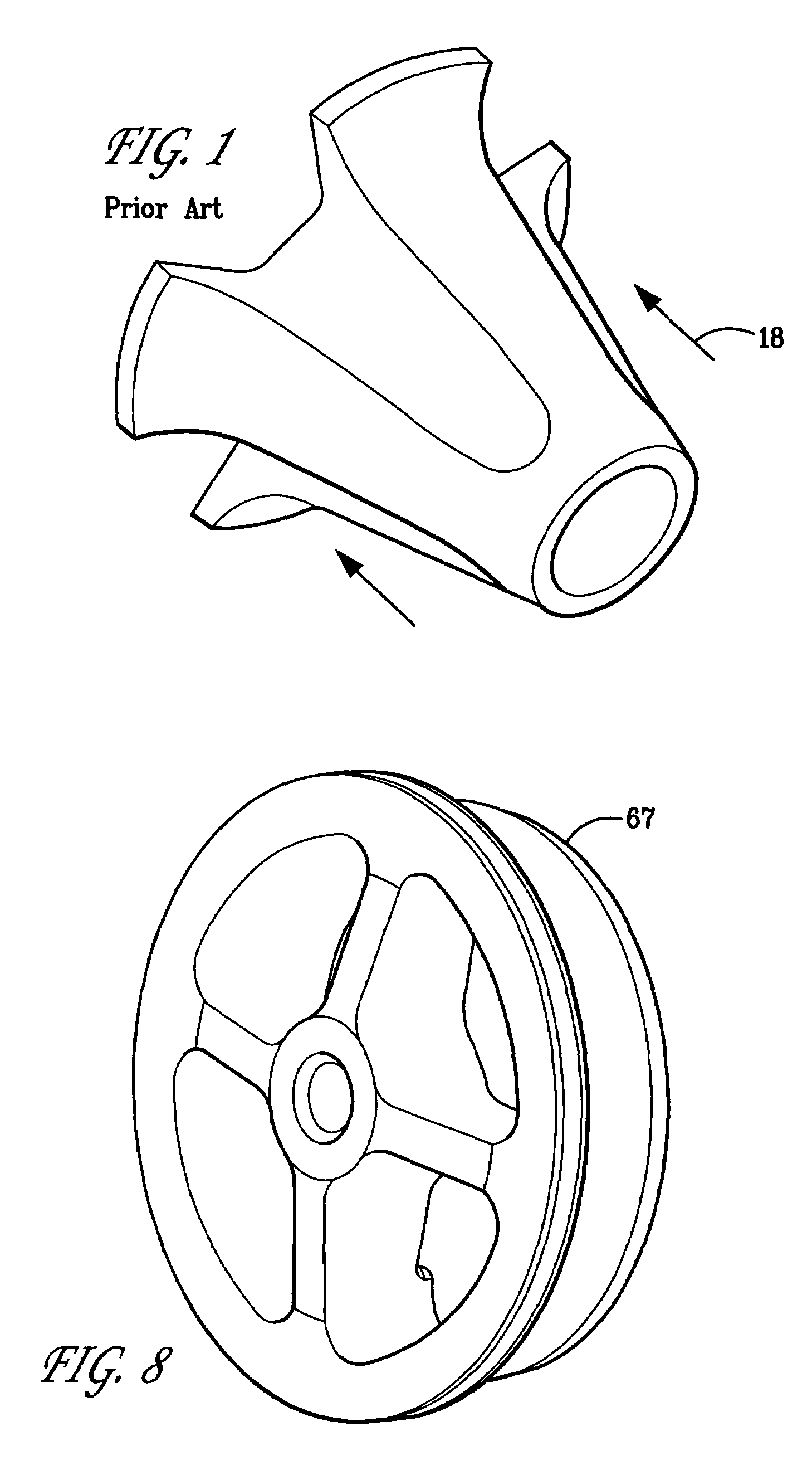Rotary pulser for transmitting information to the surface from a drill string down hole in a well
a technology of rotary pulser and drill string, which is applied in the direction of instruments, borehole/well accessories, surveys, etc., can solve the problems of vibration wear and abrasion of the drill string, and large pressure on the components of the drill string
- Summary
- Abstract
- Description
- Claims
- Application Information
AI Technical Summary
Benefits of technology
Problems solved by technology
Method used
Image
Examples
Embodiment Construction
[0031]A drilling operation incorporating a mud pulse telemetry system according to the current invention is shown in FIG. 2. A drill bit 2 drills a bore hole 4 into a formation 5. The drill bit 2 is attached to a drill string 6 that, as is conventional, is formed of sections of piping joined together. As is also conventional, a mud pump 16 pumps drilling mud 18 downward through the drill string 6 and into the drill bit 2. The drilling mud 18 flows upward to the surface through the annular passage between the bore 4 and the drill string 6, where, after cleaning, it is recirculated back down the drill string by the mud pump 16. As is conventional in MWD and LWD systems, sensors 8, such as those of the types discussed above, are located in the bottom hole assembly portion 7 of the drill string 6. In addition, a surface pressure sensor 20, which may be a transducer, senses pressure pulses in the drilling mud 18. According to a preferred embodiment of the invention, a pulser device 22, s...
PUM
 Login to View More
Login to View More Abstract
Description
Claims
Application Information
 Login to View More
Login to View More - R&D
- Intellectual Property
- Life Sciences
- Materials
- Tech Scout
- Unparalleled Data Quality
- Higher Quality Content
- 60% Fewer Hallucinations
Browse by: Latest US Patents, China's latest patents, Technical Efficacy Thesaurus, Application Domain, Technology Topic, Popular Technical Reports.
© 2025 PatSnap. All rights reserved.Legal|Privacy policy|Modern Slavery Act Transparency Statement|Sitemap|About US| Contact US: help@patsnap.com



